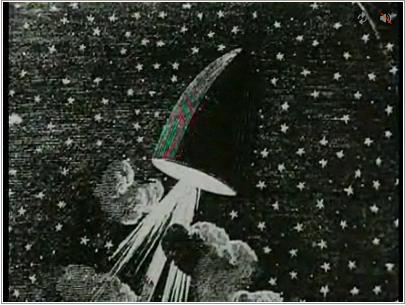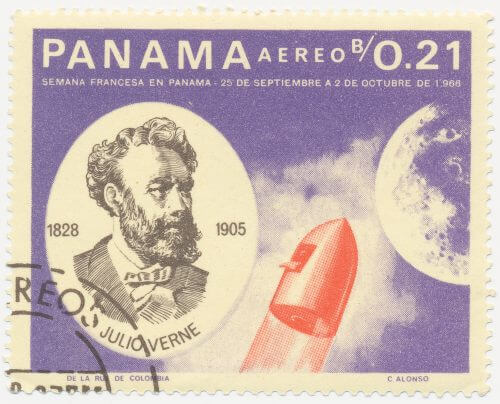The European Space Agency pays tribute in a video it produced, to ideas in the field of space, which appeared in science fiction books before they became (or will become) reality

Whether it is the interstellar spaceship Enterprise fromStar Trek Or the space station from the movie 2001 A Space Odyssey, science fiction has always provided inspiration for scientists and engineers who design and build real spaceships. Satellites, space stations, man on the moon - all these were once science fiction but today they are reality.
Many space scientists wrote and some are writing science fiction today. The famous German rocket designer Werner Von Braun, the man responsible for the Apollo moon landings, wrote science fiction stories for magazines and short stories for movies. It is therefore not surprising that the European Space Agency (ESA) takes science fiction seriously. Since its foundation in 1975, the European Space Agency has developed advanced spacecraft and satellites and even sent European astronauts into space (albeit in American and Russian spacecraft, AB). While working together with its international partners, it is building the International Space Station.
One of the most influential science fiction writers of the 20th century was Arthur C. Clark. Before becoming a writer he was an active scientist. In an article in 1945, Clark proposed the idea of launching geostationary satellites for the field of telecommunications. Now hundreds of such satellites orbit the earth and the geostationary orbit is named after him - Clark's belt.

In addition to the many science fiction books he wrote, he co-wrote the script for the classic science fiction film - 2001 A Space Odyssey. Some of the action in the film took place inside a spinning space station. This idea can be traced back to the wheel-shaped space stations proposed by von Braun in MDV magazines in the sixties. The space station in the movie 2001, was used as a transition point from low Earth orbit to other planets. One day, the International Space Station may fulfill the same role as well as launch manned missions to other planets in the solar system.
Space stations are exotic, but of course they must be built in space and the crew and supplies must be transported from Earth. To do this, spaceships are needed that are able to escape the Earth's gravity - and for that we need powerful missiles.
The man known as the father of modern spaceflight, Konstantin Tsiolkovsky, drew inspiration from authors such as Jules Verne who wrote science adventure books. Vern has taken a step forward in solving the problem of launching a spacecraft that can escape the Earth's gravity. in his book "From the earth to the moonHe asked to launch his heroes in a "moon ship" from a huge cannon inside of which, in a sort of envelope, the crew members stayed. Unfortunately, in reality, the acceleration forces generated in Vern's cannon could have crushed the crew members. The acceleration in the real rockets is much lower than in the projectile fired from Verne's cannon.
Ariane launcher - the main launcher of the European Space Agency
In February 2008, the European Space Agency successfully launched the automated space truck (ATV) on his journey to the space station (the first spacecraft in the series was also named after Jules Verne). Based on the experience gained during the development and construction of the ATV, the European Agency now has the capabilities to develop a spacecraft that can carry humans into space. However, in order to fly to other planets, it is necessary to develop innovative spaceships, so that they can cover these enormous distances, in a not long period of time, and here again science fiction breaks the way.
Interplanetary spaceships powered by solar sails have appeared in films such as Star Wars and Star Trek. However, one of the earliest references to them was in the story of Cordwainer Smith. In the XNUMXs he wrote how an interplanetary spaceship would be propelled using light sails.
Lightsabers sound like science fiction fantasy, but space agencies all over the world are thinking about how to make this amazing technology a reality. The idea is that light particles (photons) from the stars create pressure on the surface where it hits. In the almost complete vacuum of space, this provides enough energy to propel a spacecraft.
One of the main reasons for traveling to other planets is to establish a permanent settlement on them. Settlement of these worlds is a common theme in science fiction, starting with "The First Man on the Moon" by H.G. Wells and the Martian stories of Philip K. Dick, the writers tried to describe how this could be achieved.
Expanding humanity's presence in the universe is not something that can be done easily, but the European Space Agency, and other international space agencies, are currently working on the idea of establishing bases on the Moon and Mars. So, just as science fiction led the way 100 years ago, it continues to inspire us as we plan missions to other planets in the solar system.
For a video on the European Space Agency website
On the same topic on the science website:

4 תגובות
These are the well-known communication satellites that are all in the same orbit at an altitude of 36 thousand kilometers, where they circle the earth at the same speed as its self-rotation and so they seem to hang on one point. This is what is meant by the word geostationary. Geo - ball (the earth); Stationary - permanent.
Very interesting article
There is an unclear sentence in the article (at least to me)
I would appreciate it if you could add an explanation
"The idea of launching geostationary satellites for the field of telecommunications."
What about an atomic reactor whose side effects are intergalactic propulsion?
Simply smash atoms and with the help of the enormous energy created push a spaceship with acceleration into space
: )
Also added free patent ideas website
http://www.openpatents.co.il
And in English
http://www.openpatents.net